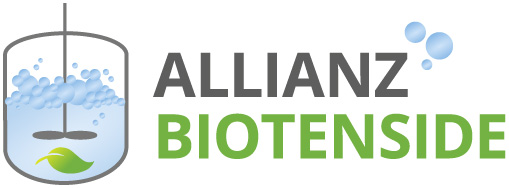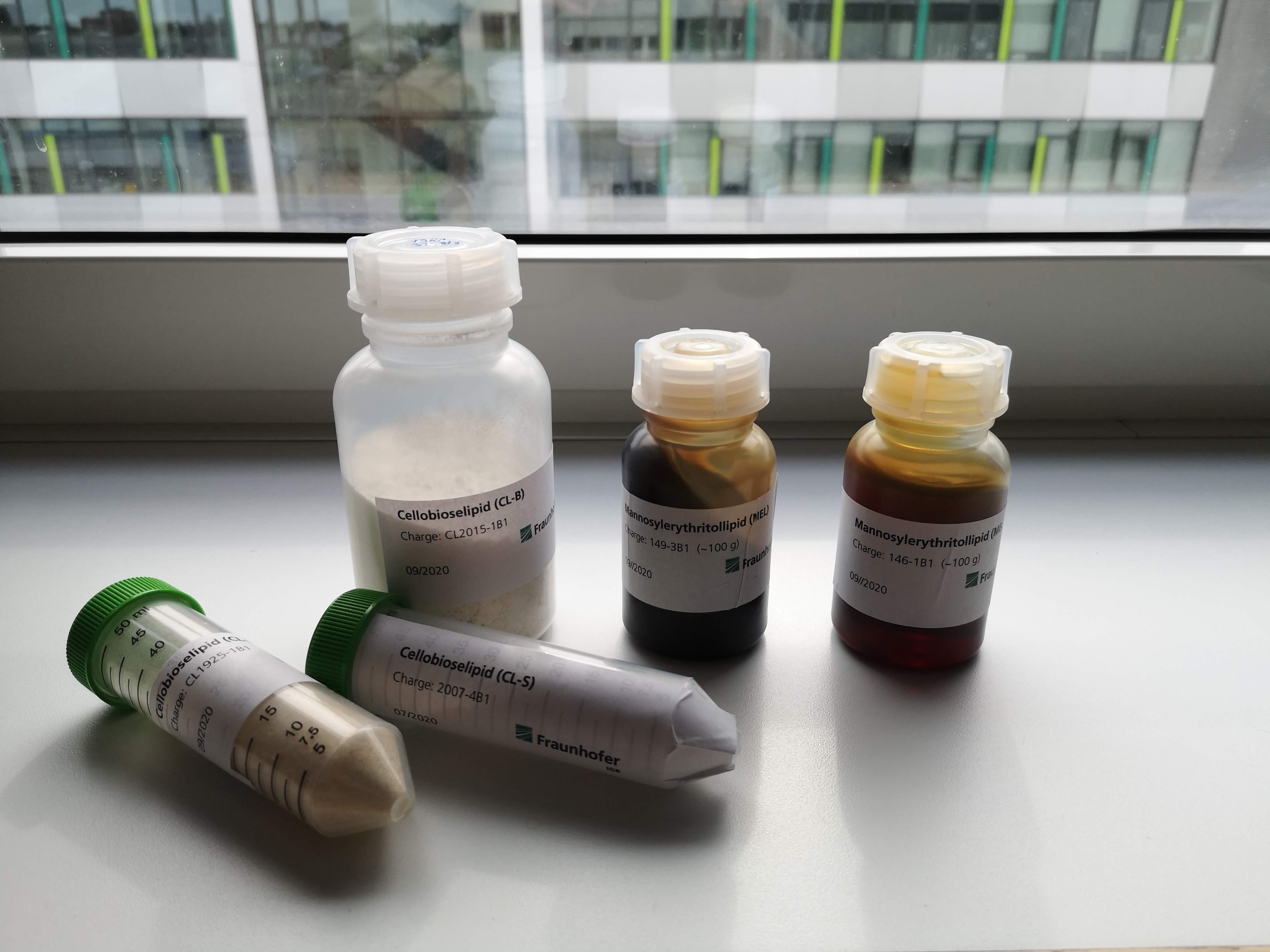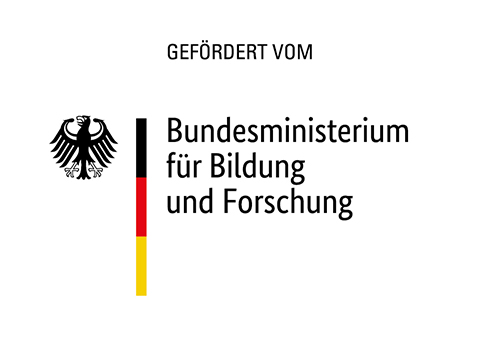The Biosurfactants Innovation Alliance is the first strategic alliance of renowned companies and research institutions in Germany aiming at finding sustainable and scalable alternatives to chemically synthesized surfactants, which have so far been produced from fossil raw materials. Therefore, we are examining and developing the process engineering production of biosurfactants in the alliance using biotechnological methods based on domestic renewable raw materials and residues. Together with our project partners, we systematically investigate their potential applications – for example, as components of detergents and cleaning agents, in cosmetics, bioremediation, crop protection and food.
Comprehensive characterization of biosurfactants
During the first funding phase (2018 – 2020), the provision of regionally available sugar-, fat- and oil-containing raw materials was considered. A wide variety of microorganisms for the production of different biosurfactant classes were investigated, and promising candidates for subsequent process development on a laboratory scale were selected and investigated in terms of application technology.
Focus on process technology and scale-up
In the second phase of the project (2021 – 2024), greater emphasis will be placed on the implementation of scale-up. Here, the fermentation and purification processes are to be further developed in terms of robust, controllable processes and simplified purification methods to enable gradual scaling up to the next orders of magnitude.
Looking at the purification route, complex purification methods often represent the largest cost driver. Here, existing and innovative technologies need to be investigated, linked and optimized so that the number of steps for biosurfactant purification is minimized. The project partners are devoting themselves to this holistic process-related risk and cost minimization approach in the second phase of the project.
By providing larger sample quantities, the second phase will further provide detailed answers to open questions about the performance profiles of individual application areas. This is only possible with larger sample quantities from the 100-gram scale upwards, which goes hand in hand with an upscaling of the fermentation and downstream process.
Verification of safety-relevant properties
In addition, studies are needed to verify the safety profile for the environment and humans. In the second project phase, hazard analyses will therefore be carried out and safety data sheets prepared in order to identify necessary investigations for individual biosurfactants in the specific areas of application. This is particularly necessary because the criteria (regulations, guidelines) may differ fundamentally depending on the area of application, whether for use in cosmetics, food or cleaning agents, for instance.

 Fraunhofer Institute for Interfacial Engineering and Biotechnology IGB
Fraunhofer Institute for Interfacial Engineering and Biotechnology IGB

